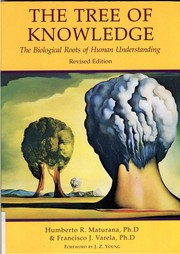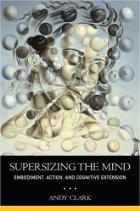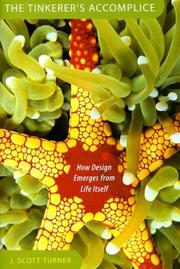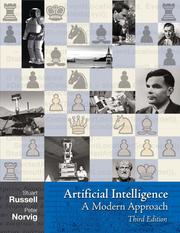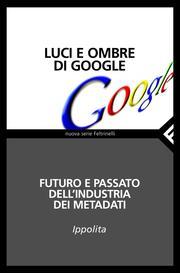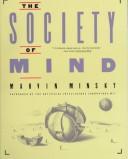The Tree of Knowledge: The Biological Roots of Human Understanding by Humberto R. Maturana and Francisco J. Varela - ISBN 0877736421 - Shambhala Publications 1992
Motivation
Recommended during several cognitive science classes at UTC around 2005 with discussions with John Stewart (cf Cognition), multiple discussions after AIW01 during autumn 2010 and with @MGandon after AIW02.
Pre-reading model
Draw a schema (using PmGraphViz or another solution) of the situation of the area in the studied domain before having read the book.
Reading
- special table of content presenting the 10 chapters as one loop
- and multiple sub-loops with the key concepts of each chapter
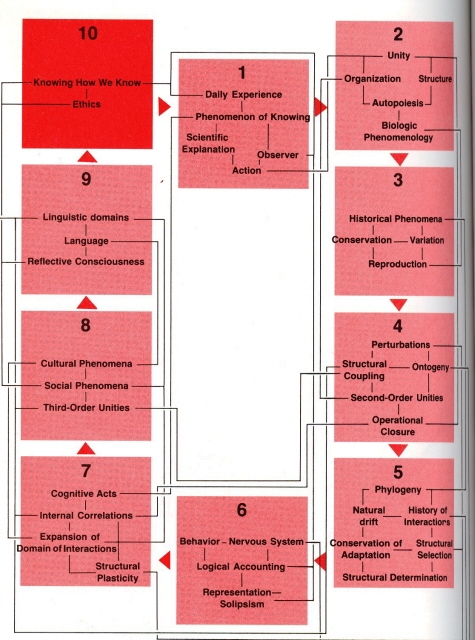
- 1 Knowing How We Know
- "this whole book is a sort of invitation to restrain from the habit of falling into the temptation of certainty" (p18)
- "his book aims to show, by scrutinizing the phenomenon of cognition and our actions flowing from it, is that all cognitive experience involves the knower in a personal way, rooter in his biological structure." (p18)
- key sayings (p27)
- "All doing is knowing, and all knowing is doing."
- "Everything said is said by someone."
- which one could relate to Rolf Landauer's famous "information is physical."
- 2 The Organization of Living Things
- "merely asking the question of how to recognize a living being indicates that we have an idea, even if implicitly, of its organization." (p42)
- which could be compared to an analysis of functions and their relations
- "living beings are characterized in that, literally, they are continually self-producing. We indicate this process when we call the organization that defines them an autopoeitic organization." (p43)
- "The most striking feature of an autopoeitic system is that it pulls itself up by its own bootstraps and become distinct from its environments through its own dynamics, in such a way that both things are inseparable." (p46-47)
- 3 History: Reproduction and Heredity
- Modes of Generating Unities, distinction between Replication (p59), Copy (p59) and Reproduction (p61)
- "each time there is a historical series, we have the phenomenon of heredity; that is, we find structural configurations proper to a member of one series that reappear in the following member."(p67)
- thus one can see explicit history as an affordance
- history as a descriptive discipline but also statistics and currently machine learning
- 4 The Life of Metacellulars
- diagram of autopoeitic unities and the interaction between two (or more) neighboring unities (p74)
- second-order individuals as coupling between cells (p83)
- second-order autopoeitic systems, e.g. metacellular (p87)
- first-order autopoeitic systems have "operational closure [internal organization] in their organization" (p89)
- notion of structural coupling and of coupled ontogenies
- diagram of symbiosis, an inclusion of the boundaries of both unities, and metacellularity, preserving their individual limits both with a new coherence (p88)
- 5 The Natural Drift of Living Beings
- "In his Origin of Species, Darwin pointed out for the first time the relation between generational variation and structural coupling [used as selection]." (p101)
- 6 Behavioral Domains
- 7 The Nervous System and Cognition
- mention of Seedea:Content/Newconcepts#Chemotaxis
 (p149)
(p149)
- using Wikipedia:Hydra (genus)
 and its very simple Wikipedia:Nerve net
and its very simple Wikipedia:Nerve net (p150)
(p150)
- "the hydra's behavior (feeding, flight, reproduction, etc.) results from the different ways in which these two surfaces (sensory and motor) are dynamically related, via the intraneuronal network, to constitute the nervous system." (p153)
- 10:100 000:1 as the ratio of motor:interconnection:sensory (p159)
- equivalent to more than combinatorial possibilities?
- "the nervous system emerges in the phylogenetic history of living beings like a network of special cells (neurons), which is embedded in the organism in such a way that it couples points in the sensory surfaces with points in the vmotor surfaces." (p163)
- see also discussion with Raphael regarding corticogenesis, education, and a brain a physical perpetual correlations extractor, including regarding itself and the body is it part of (early walk on the banks of La Marne before his trip to Russia)
- "to live is to know (living is effective action in existence as a living being)" (p174)
- schema taking into account the nervous system also as operational closure (p176)
- 8 Social Phenomena
- introduction of co-ontogenies, co-drifting organisms (p180)
- third-order structural coupling (p180)
- "all the ontogenies of the different members of an ant colony are bound together in a co-ontogenic structural drift as they arise in a network of continuously changing trophallactic interactions. (p186)
- "In an ant colony, the ontogeny of each individual is contingent on the ontogenies of the others." (p186)
- "[third-order unities] generate a particular internal phenomenology, namely, one in which the individual ontogenies of all the participating organisms occur fundamentally as part of the network of co-ontogenies that they bring about in constituting third-order unities." (p193)
- The metaphor of the tube for communication (p196)
- imitation describe as a vertebrate skill (p196)
- Altruism and Selfiness (p197)
- Organisms and Societes (p198)
- Cultural behavior (p201)
- 9 Linguistic Domains and Human Consciousness
- distinction between idealized semantic or anthropomorphism and mutual triggering through the example of a cat walking on a piano and his owner (p206)
- "the key feature of language that radically modifies human behavioral domains and makes possible new phenomena such as reflection and consciousness." (p210)
- "languages enable those who operate in it to describe themselves and their circumstances through the linguistic distinction of linguistic distinctions." (p210)
- "meaning arises as a relationship of linguistic distinctions." (p211)
- "meaning becomes part of our domain of conversation of adaption." (p211)
- making culture a key vector of survival
- specificity of sign language
- trying to define human/non-human through language ability then the mirror experiment aka Wikipedia:Rouge test

- "we maintain on ongoing descriptive recursion which we called the <<I>>." (p231)
- "Consciousness and mind beyond to the real of social coupling. That is the locus of their dynamics." (p232)
- concluding on the importance of constant binding with language as the way to exist ourselves and with others
- 10 The Tree of Knowledge
- "[The] dizziness results from our not having a fixed point of reference to which we can anchor our descriptions in order to affirm and defend their validity." (p240)
- restating the difficulty of objectivity vs idealism
- "everything we said in this book, through our knowledge of knowledge, implies an ethics we cannot evade, an ethics that has its reference point in the awareness of the biological and the social structure of human being, an ethics that springs from human reflection and puts human reflection right at the core as a constructive phenomenon." (p245)
- thus Ethics but also AIWProposal to question and eventually define "healthy" boundaries
- see also the work during the end of 2010 announced during UnRegardSurLHommeContemporain by Alain Berthoz on the link between cognition, empathy and the ability to construct an allocentric viewpoint
- definition of love as "the acceptance of the other person beside us in our daily living [...] the biological foundation of our social phenomena" (p246)
- Ethics (p247)
- concluding on the importance of knowledge of knowledge (without mentioning epistemology), as a practical and fundamental tool
- Afterwords
- rephrasing the 2 fundamental tenets
- "animal and the environment are two side of the same coin, knower and known are mutually specified." (p253)
- fundamental place of autonomy, from the cell to the scientific praxis
- and again (p254)
- "(1) the need for a nonrepresentationist view of knowledge based on the sense-making capacity of an autonomous living system"
- "(2) the need to close the circle between what is valid as a mechanism for animals and machines and what pertains to our own experience, including science."
- mention of the term enactive
See also
- Cognition
- Wikipedia:Autopoiesis

- Wikipedia:Francisco Varela

- Wikipedia:Humberto Maturana

- An Introduction to "Maturana's" Biology by Lloyd Fell and David Russell
- Joy Murray, Maturana's biology and some possible implications for education on PhilPapers
- OwnConcepts#Epistemotaxis
- Cognition = life: Implications for higher-level cognition by John Stewart, Behavioural Processes 1995
- First European Summer School of Life and Cognition 2010
- Enaction and Cognitive Science Summer School, 2010
- autopoiesis in the Web Dictionary of Cybernetics and Systems, Principia Cybernetica Web
- reviews
- Wikipedia:Neuroevolution

- Scholarpedia:Autopoiesis

- On Growth, Form and Computers, Elsevier 2003
- Notes sur le Colloque Varela by Emmanuel Daucé, 2003
- Emotion, Development, and Self-Organization edited by Marc D. Lewis and Isabela Granic, Cambridge University Press 2002
- Constructivist Foundations Special Issue “The Work of Humberto Maturana and Its Application Across the Sciences”, July 2011
- Computational Autopoiesis: The Original Algorithm by Barry McMullin, Santa Fe Institute Working Papers 1997
- Rediscovering Computational Autopoiesis by Barry McMullin and Francisco Varela, Santa Fe Institute Working Papers 1997
- to be considered instead as it cover the flaws of the previous paper and is co-written with Varela
- 30 Years of Computational Autopoiesis: A Review by Barry McMullin, Artificial Life 2004
- Autopoietic.net -- Journal of Autopoietic Theory
Overall remarks and questions
- multiple references, including the title, regarding the bible do not seem really required
- concluding, like BeingNoOne and TheEgoTunnel, on the consequence of the theory for ethics and providing an ethical framework
Synthesis
So in the end, it was about X and was based on Y.
Critics
Point A, B and C are debatable because of e, f and j.
Vocabulary
(:new_vocabulary_start:)
(:new_vocabulary_end:)
Post-reading model
Draw a schema (using PmGraphViz or another solution) of the situation of the area in the studied domain after having read the book. Link it to the pre-reading model and align the two to help easy comparison.
Categories
Back to the Menu
Other read books linking to the TreeOfKnowledge page :
Back to the Menu
 Fabien Benetou's PIM
Fabien Benetou's PIM






